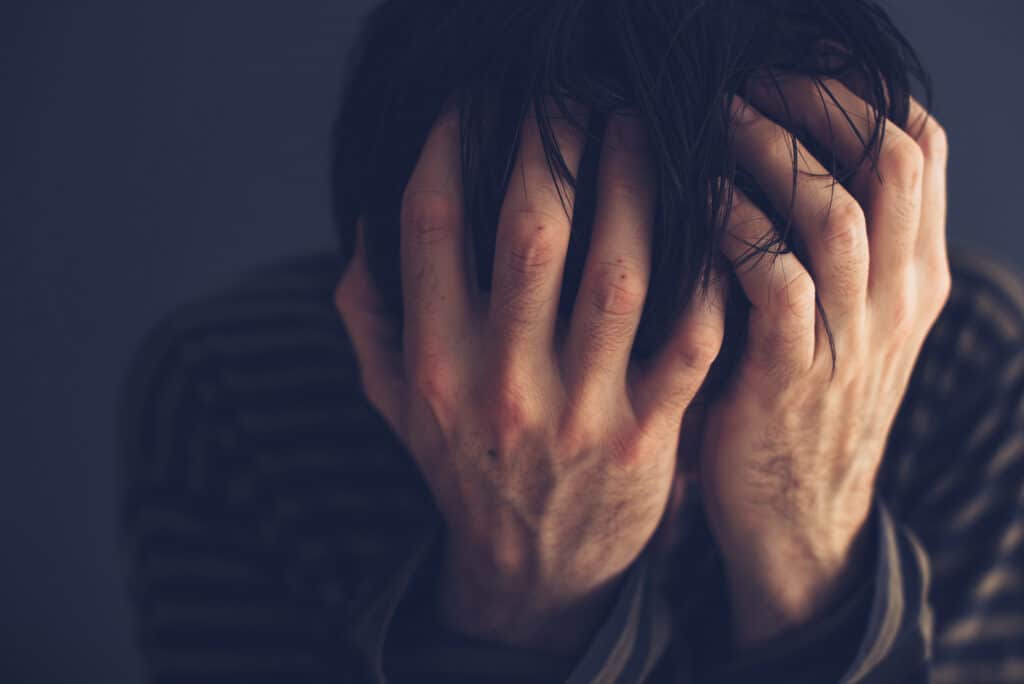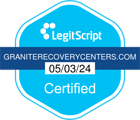
While most know about the unpleasant effects that come with detoxing from long-term use of alcohol or drugs, the lesser-known sibling that follows in its footsteps is called Post-Acute Withdrawal Syndrome, or “PAWS.” Withdrawal symptoms that come with PAWS occur as the toxins of the addictive substances leave the body. Some of these symptoms may come on during detox and take longer to physically leave the body, but others may stick around because they are psychological and mood-altering.
Withdrawal symptoms can affect people differently, and it can depend on many factors, such as which substances were used, duration of use, length, and volume of use, and so on. No matter what, they are often uncomfortable and unpleasant, and, especially with PAWS, can pose great risk for a relapse.
To understand Post-Acute Withdrawal Syndrome, it’s important to know the cause, potential warning signs, how long one can expect them to last, and coping strategies that can alleviate some of the symptoms.
What is Acute Withdrawal?
At the very early stages of detox, withdrawal symptoms are felt rather quickly. These are called ‘acute withdrawal symptoms,’ and they can be differing levels of severity depending on the substance of choice and other factors mentioned above. These can last from a couple of days to a few weeks.
When you put down a substance or substances, you are abruptly cutting off something your body has grown used to, or dependent on. It can be a prescription or illicit drug, or alcohol. Though it feels like the opposite, it’s actually your body healing from the damage the drugs and/or alcohol have done.
Your body naturally will go into alarm mode as it tries to adapt without it. Though the substance has been causing such harm to the body and mind, it will crave it and tell your body that’s what it needs to feel right again.
Some of the most common symptoms experienced in detox include:
- Nausea
- Soreness in muscles
- Headache
- Increased heart rate
- Sweating
- Inability to concentrate
- Lightheadedness
While symptoms can be mild, others can pose more danger, and even be fatal, which is why detox in a medically supervised setting is always advised:
- Vomiting
- Seizures (depending on the substance)
- Cravings
- Hallucinations
- Increased blood pressure
- Delirium tremens
- Body pains
- Decreased body control
Once the person has made it through medically supervised detox and is a few months into their sobriety, they will begin feeling physically better and more clear-headed.
Granite Recovery Centers provides medical detoxification for people who do not need immediate medical intervention, are not a danger to themselves, and are capable of self-evacuation in the event of an emergency.
What is Post-Acute Withdrawal?
PAWS is essentially a second wave of withdrawal symptoms.
After the physical sickness and brain fog often experienced with the initial detox stage diminishes, an individual may feel like they are now in the clear. They may be feeling very confident and even invincible. People in long-term recovery will tell you that it’s crucial to remain vigilant in your recovery no matter how long you have under your belt, but it is especially important in these first few months, and PAWS is one of the reasons for that.
If ‘acute withdrawal’ refers to an individual’s body healing, then the post-acute withdrawal that follows happens as the body and brain recalibrate after long-term, active substance use. These will include emotional and psychological symptoms of the withdrawal process.
As we mentioned before, depending on the substance used, the duration of active addiction, how much the person was using, and how often they were using, these symptoms can happen either a couple of weeks into recovery or further down the line. As the brain is working hard to realign the chemical imbalances that active addiction caused, there can be uneven distribution throughout their body. This can cause mood swings, depression, anxiety, and other forms of psychological stress.
PAWS are reported to occur most often among individuals who are recovering from alcohol, opioid, and benzo addiction, but can result from others, too. The most reported drugs used that lead to PAWS symptoms include:
- Alcohol
- Antidepressants
- Antipsychotics
- Benzodiazepines
- Marijuana
- Opioids
- Cocaine and other stimulants
The symptoms experienced are often ones triggered by stress that remind the person of using. This can be people, places, or things, and be very disruptive to their recovery. Co-occurring mental health conditions can also exacerbate PAWS, which is why individuals in such cases often seek initial treatment through a Dual Diagnosis program. Proper support such as ongoing medication and therapy can help immensely.
What symptoms of PAWS are most common?
Individuals who have experienced PAWS describe the symptoms like mood swings that come and go in rapid fashion. They may feel anxious and upset one moment, and the next feel level-headed and calm. It is very unexpected which makes it more difficult to manage or be prepared for. The good news is that as individuals continue down their path of recovery from alcohol or drug dependence, the symptoms will occur less frequently.
It’s also important to recognize that some symptoms experienced in recovery are because of PAWS, and not because a person is unhappy with their life in sobriety. This can be confusing if it happens a few months into their recovery and they have been doing very well, mentally and physically. It’s also important to know that these symptoms are temporary.
Some of the most common PAWS symptoms include:
- Poor memory, foggy thinking
- Very strong cravings
- Impulsivity
- Sharp mood swings, typically marked with irritability or hostility
- Difficulty sleeping or very vivid dreams
- Fatigue
- Poor balance
- Low stress tolerance
- Bouts of anxiety, or panic attacks
- Depression, feeling “blue”
- Feeling despondent, lacking ambition
- Lack of focus
- Decreased libido
- Phantom or unexplained chronic pain
Most of the above symptoms can last for a couple of days at a time if they are not in frequent bursts, such as seemingly random mood swings. The frequency and amount of a person’s use while in active addiction can have something to do with the severity of PAWS symptoms and for how long they will last, however, and, in severe cases, it can take six months to two years for the healing process to truly be complete. Only then can the brain and body properly produce the chemicals it was lacking during the addiction, such as endorphins and dopamine.
Can PAWS be avoided?
PAWS is not currently recognized as an official medical diagnosis, and there is some controversy over whether it is a true condition. It is difficult to measure given it is almost entirely based on an individual self-reporting symptoms, which leads some medical professionals to believe it may be used as an excuse for relapse. The other suggestion is that withdrawal lasts longer than we think, and it is just further symptoms stemming from stopping the substance use.
While medical research on the subject continues, one thing that is certain is that individuals continue to report on these symptoms, and so the best thing to do is be aware and knowledgeable about it. For someone in early recovery, these symptoms cannot be avoided with any proven protocol, but they can be more easily managed by applying coping skills and other tools taught in early recovery. Individuals can utilize these to feel better physically and emotionally, improve their self-esteem, and better arm themselves against a relapse.
Some coping strategies that have been known to aid with PAWS include:
- Begin or continue therapeutic treatment with a mental health professional or professionals.
- Practice self-care by observing a healthy and balanced diet, getting exercise, and keeping a strong support network on hand. Having a positive environment and avoiding stressful situations or places/people/things that are reminiscent of active addiction is also critical. Distance yourself from or remove people who are not supportive of your recovery, or with whom you used in the past.
- Utilize your recovery network, whether that be through a support group (Twelve Step, AA, NA, CA, HA, SMART Recovery), a sponsor, or substance abuse counselor.
- Should you experience PAWS symptoms, try to take note of them, how long they last, and what you did leading up to them so that you can evaluate, avoid, and prepare for trigger situations in the future. A journal is a great way to keep track of these, and can help you describe them to a therapist or medical professional with specific examples.
- If you are finding it difficult to focus, take small breaks throughout the day. Try to get some sun or take Vitamin D vitamins, and breathe fresh air a few times a day.
- Include things you enjoy into your daily schedule, but also mix it up. Try new activities like bike riding, or call an old friend to check in. Going for a walk around your neighborhood can be a great way to clear your head and chop up the day a bit, too.
- Set up reminders on your phone or in a planner if you are having difficulty remembering appointments, tasks, or other responsibilities.
- Cut down on caffeine, especially if you are experiencing a lot of anxiety and/or panic. Especially avoid caffeine before bed.
- Practice mindfulness. If sleeping is not coming easy, try to set up a bedtime routine that you can stick to. Stay off screens for an hour before bed, read a book or listen to a meditation or some gentle music, and try to settle down at the same time each night so your body will get used to a time schedule.
- Try to be patient. Remember that, just like the uncomfortable symptoms you experienced in detox, PAWS will go away. This is your body’s way of healing and while it may take longer than you hoped, it will be worth it.
- Life in recovery is not perfect, and there will be bad days. Just remember that picking up a drink or a drug will not make things better, they will only make you forget them temporarily. You are choosing to begin a new life in recovery, and that is something to be very proud of.
It’s important to note that certain medications can aid with the symptoms brought on by PAWS. Naltrexone, also known as Vivitrol when administered intravenously, can reduce or even eliminate cravings. Several other addiction medications can further assist in restoring balance in your mind and body, but it’s good to remember that both the withdrawal symptoms and cravings often fade on their own with time.
Granite Recovery Centers
If you or a loved one is in need of help managing PAWS in addiction recovery, or is seeking treatment for a Substance Use Disorder, there is help for you at Granite Recovery Centers. Our detox program aims to mitigate the discomfort brought on by acute and post-acute symptoms in the recovery process, and our continuum of care provides clinical and therapeutic modalities to give you the best support and access to resources as you begin your journey. Granite Recovery Centers provides medical detoxification for people who do not need immediate medical intervention, are not a danger to themselves, and are capable of self-evacuation in the event of an emergency.
If you would like further information about our programs, please give us a call today. Our team of Admissions Specialists is here for you 24/7 and can be reached at 855.712.7784.

